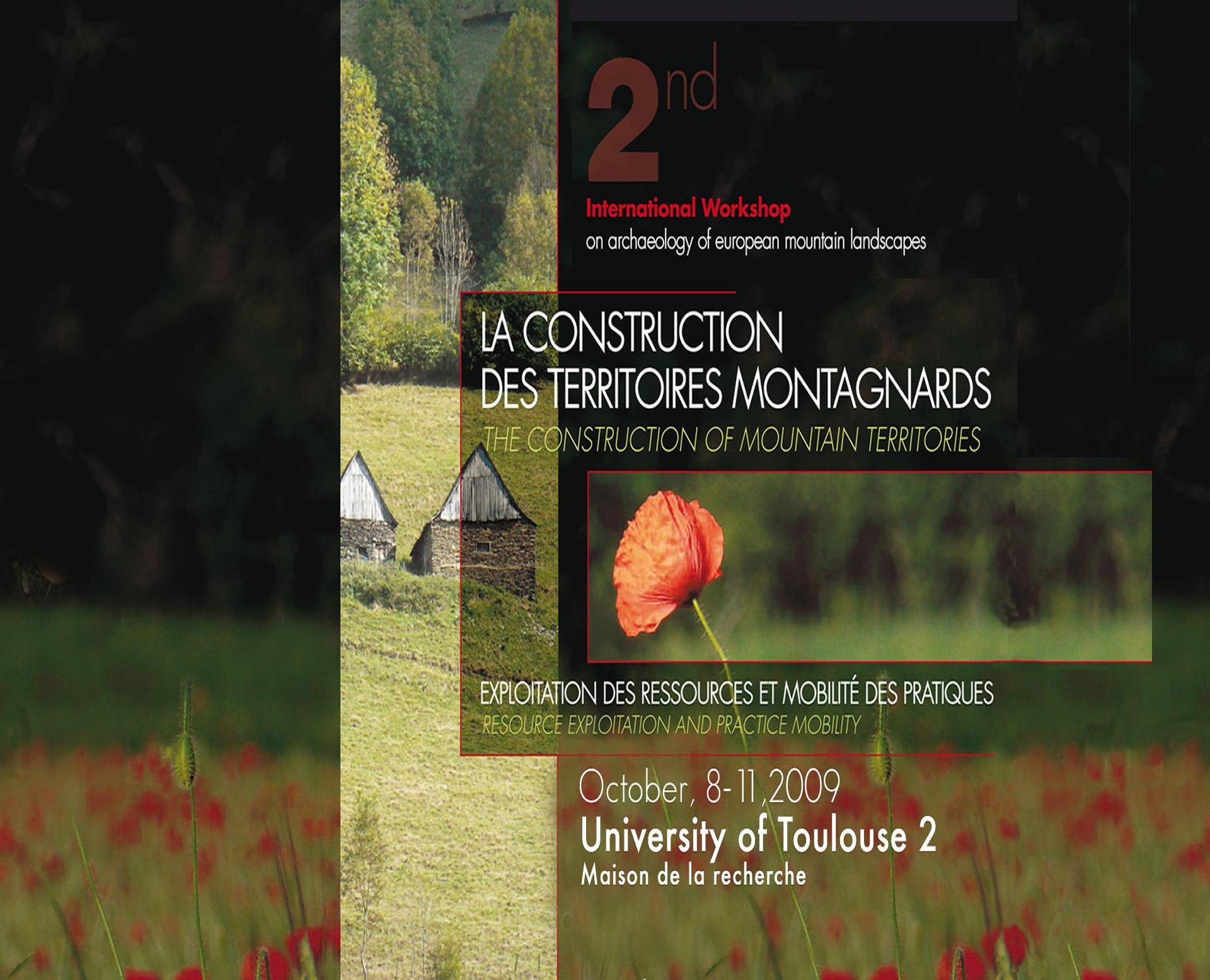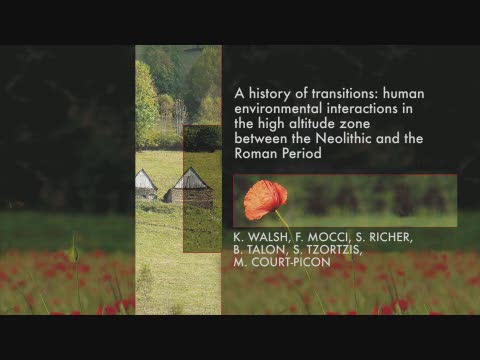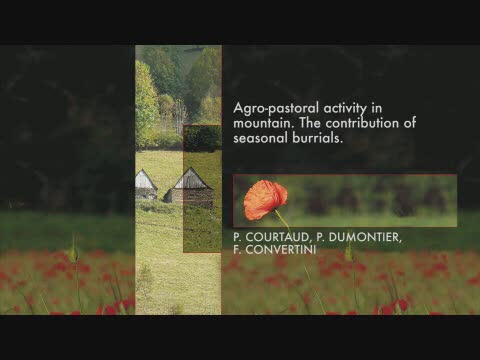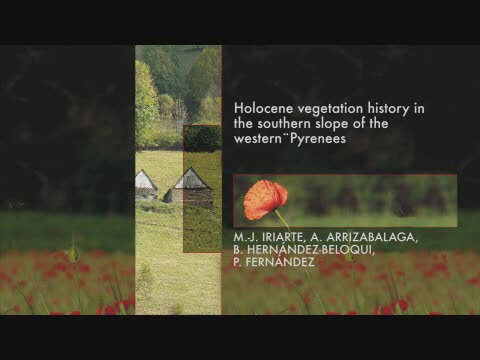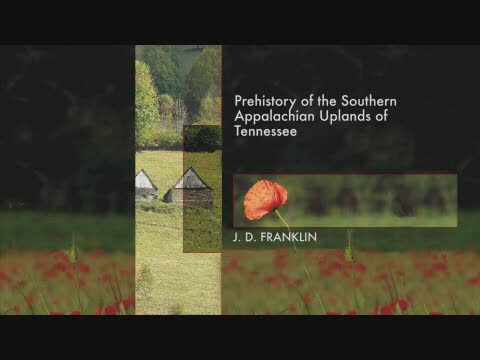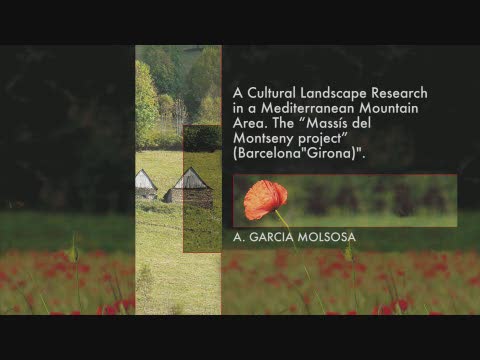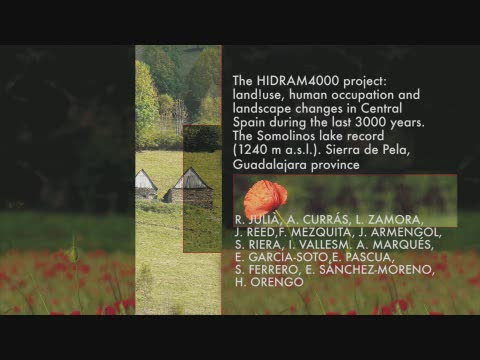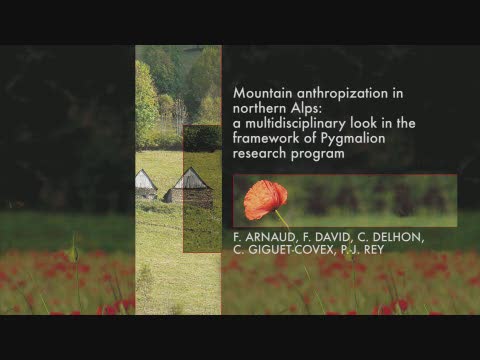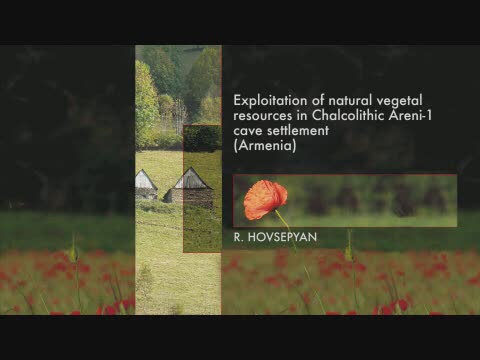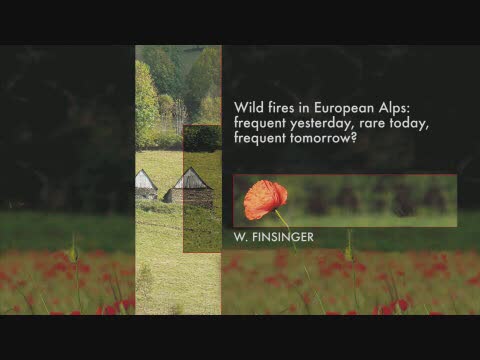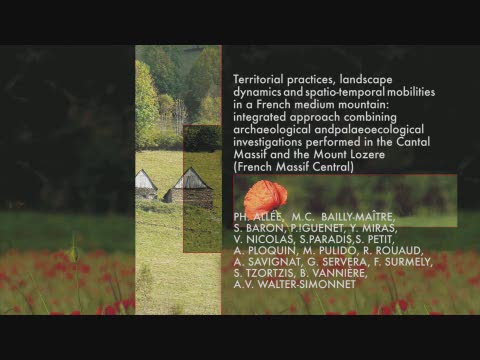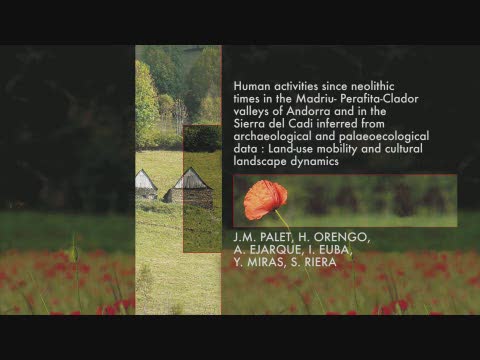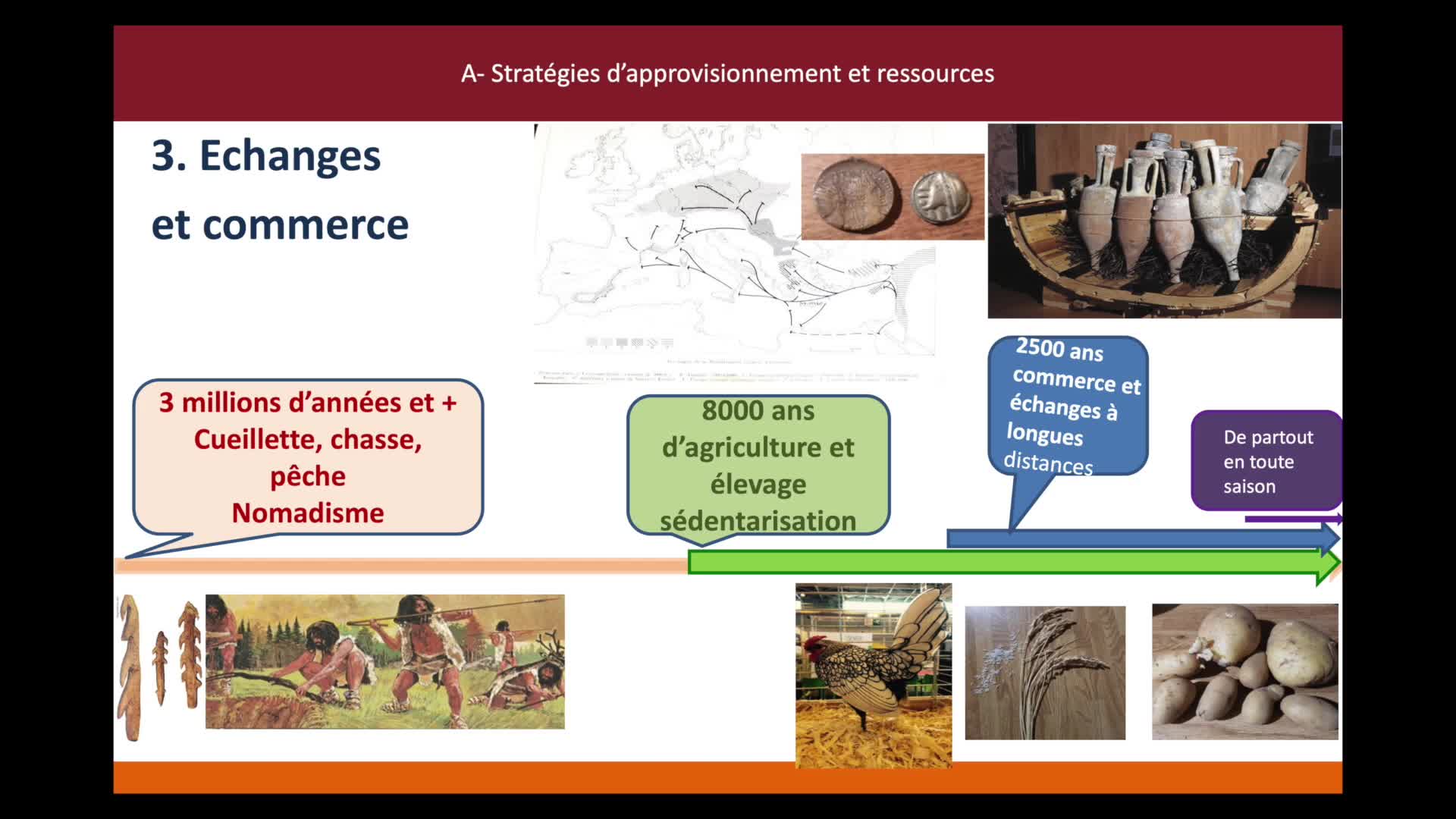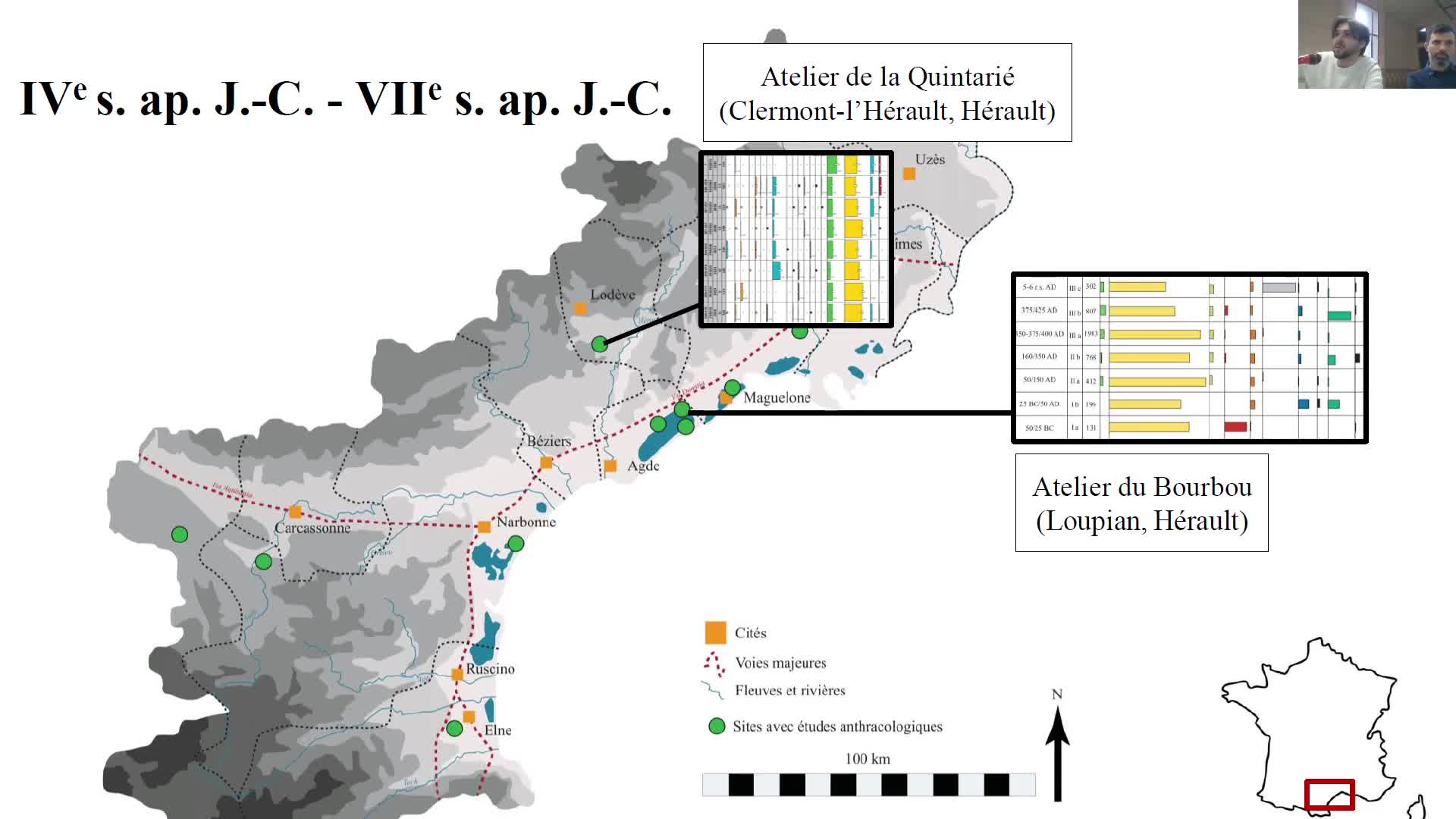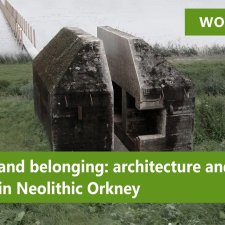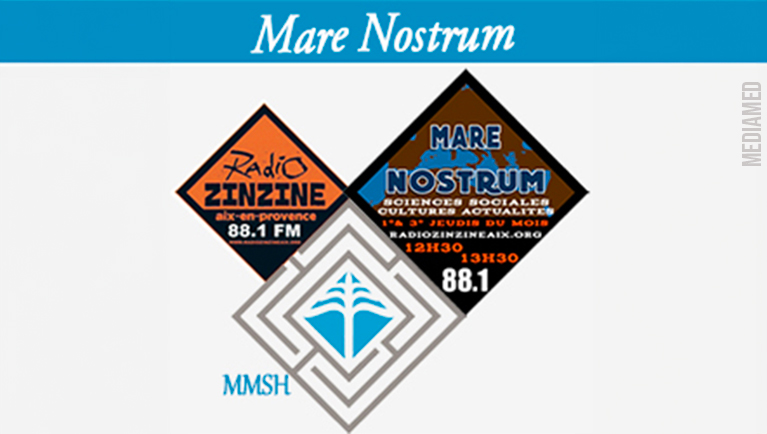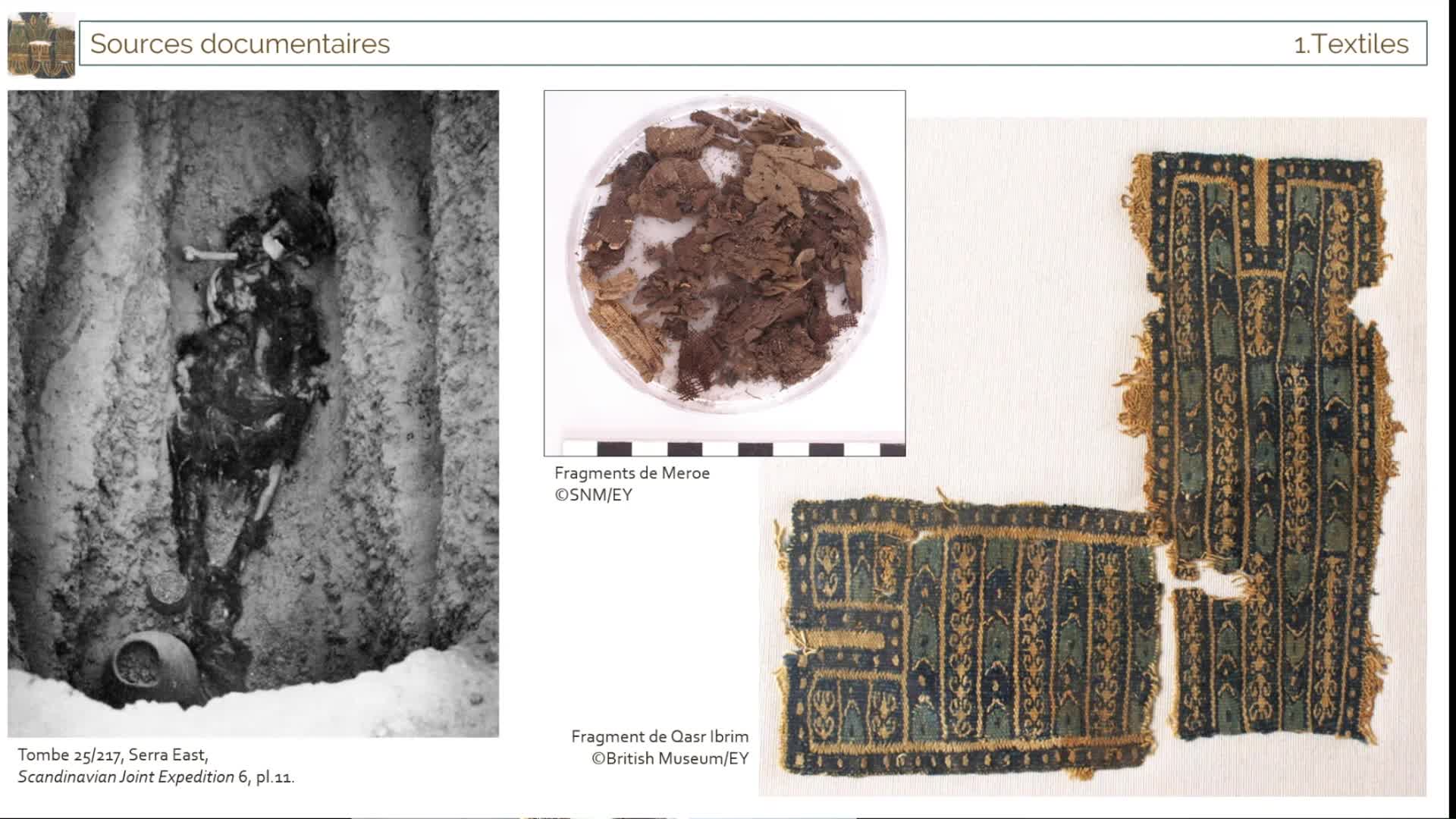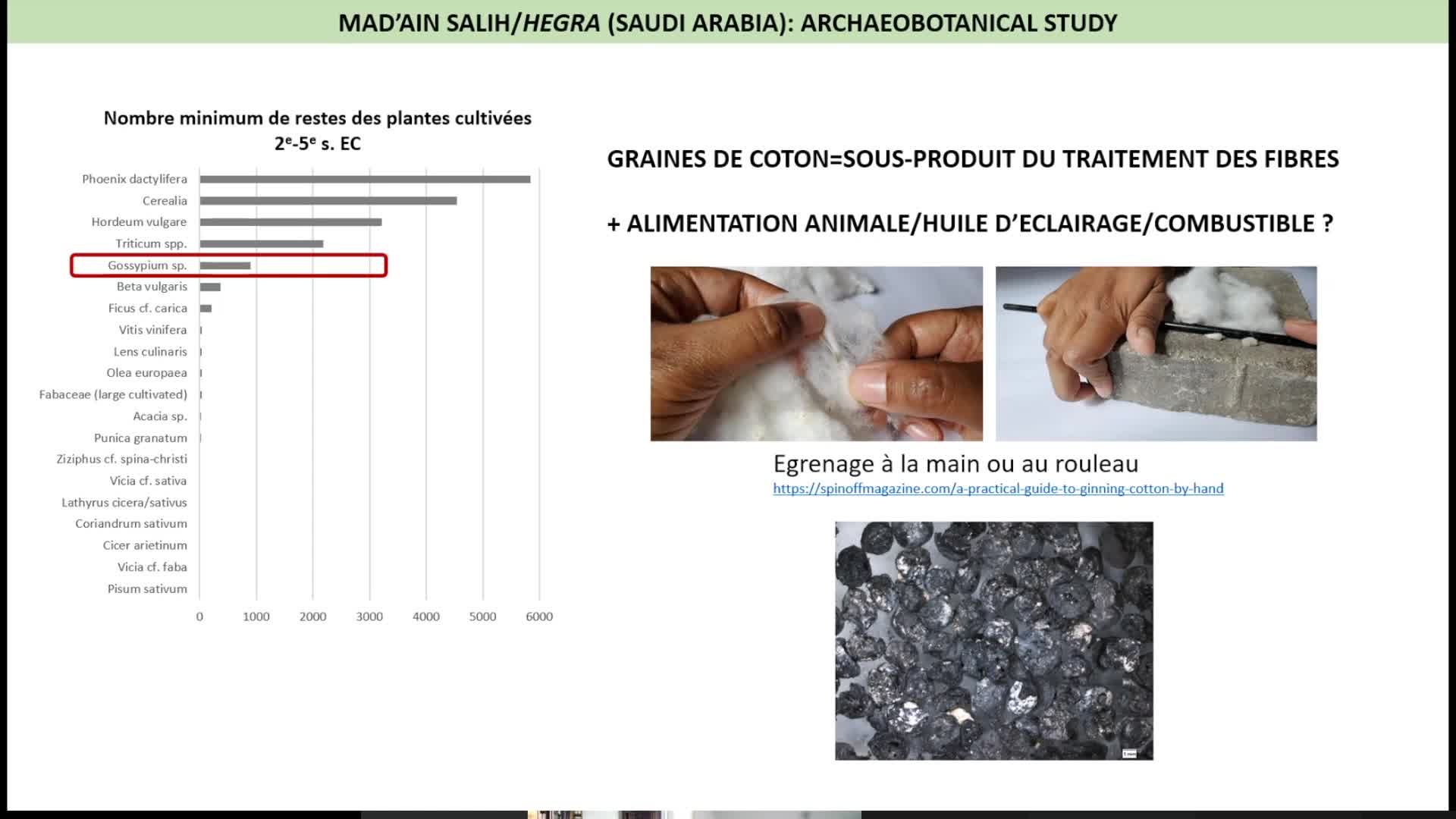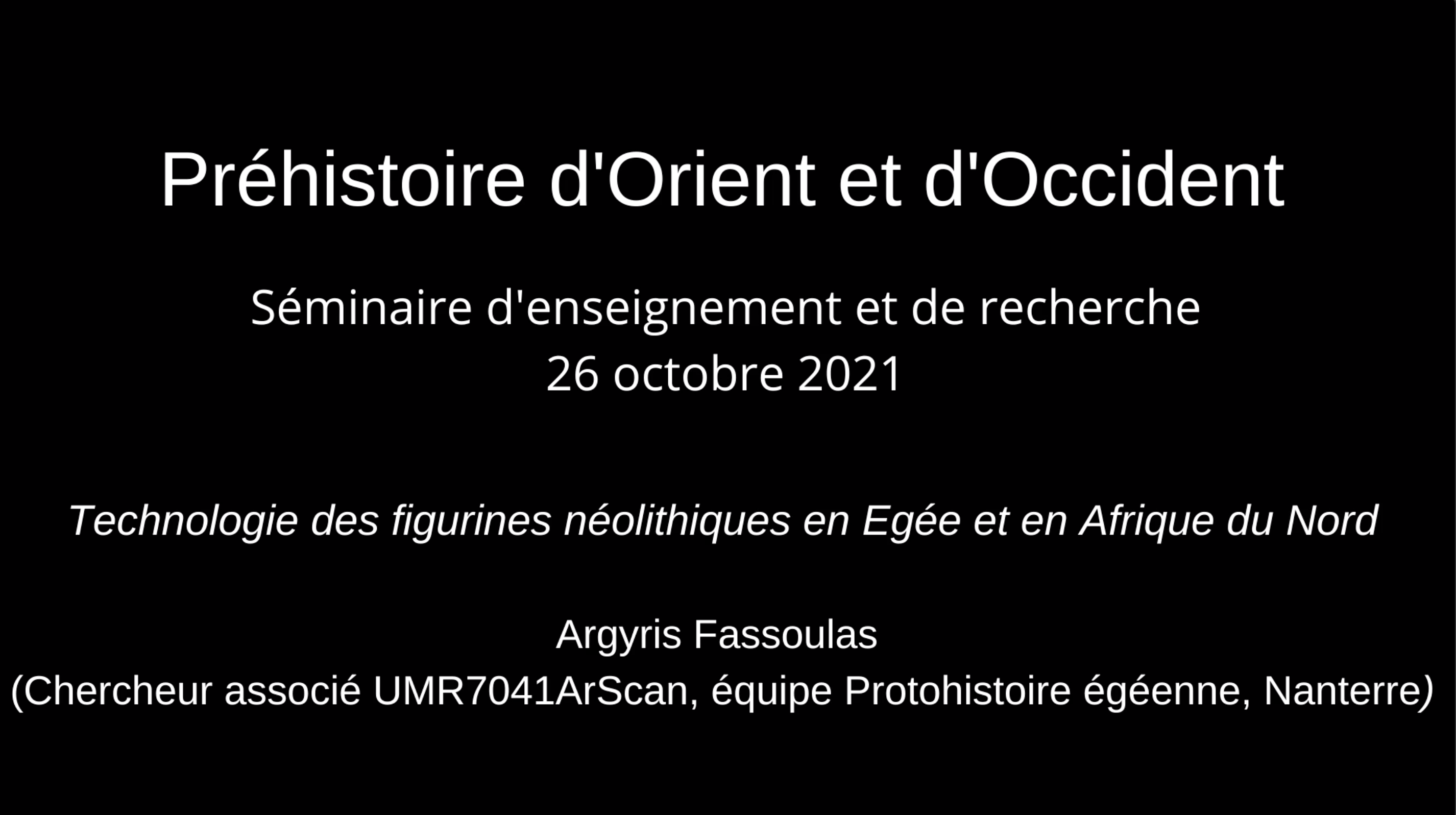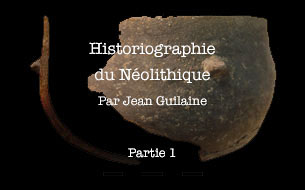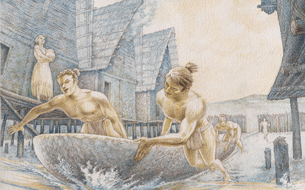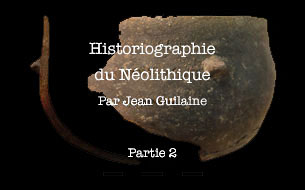Notice
Plant economy of a seasonally occupied site at high altitude during the Neolithic / Lucie Martin
- document 1 document 2 document 3
- niveau 1 niveau 2 niveau 3
Descriptif
Plant economy of a seasonally occupied site at high altitude during the Neolithic : the Rockshelter of l'Aulp du Seuil in the Chartreuse Massif (Saint-Bernard du Touvet, Isère, France) . MARTIN Lucie. In "Construction des territoires montagnards", 2ème International Workshop on archaeology of european mountain landscape, organisé par les laboratoires GEODE, FRAMESPA, GEOLAB et Chrono-Environnement. Université Toulouse 2-Le Mirail, 8-11 octobre 2009. [Première journée].
The site of l’Aulp du Seuil is located on the eastern border of the Chartreuse Massif at an altitude 1727 meters. The site, at the bottom of a small valley dug into an urgonian perched syncline, is isolated and difficult of access. At present a subalpine mountain pine forest, associated with pastured grasslands and subalpine heaths occupy the surroundings of the site. Numerous blocks were deposited during the last glaciation. They were used as shelters and seasonal hunting camps since the Mesolithic. Especially animals like chamois, alpine ibex, red deer or wild boar were hunted.
Recent excavations directed by David Pelletier (2004-2005) in the block-shelter “ALP 1” uncovered several occupations from the Mesolithic to historic periods. The present study focuses on the archaeobotanical analyses (charcoals and other plant remains) of one level dated to the middle Neolithic and including several earths. The results permit to evoke the plant economy of these human groups.
In this presentation, we will approach questions like :
- How did they manage fuel-wood ?
- How did they use wild local plants ?
- What was the consumption, on the site, of gathered and domesticated plants ?
Results highlight the mobility of Neolithic people, their knowledge of environmental setting and their capability to exploit the resources of mountain environment.
Dans la même collection
-
La construction des territoires montagnards : exploitation des ressources et mobilité des pratiques…
GALOP Didier
The occupation and the exploitation of mountain environments, both during conquest and maximum demographic phases, or on the contrary, during desertification phases, differ in geographical
-
Human environmental interactions in high altitude zone between Neolithic and roman period / K. Walsh
WALSH Kevin
A History of Transitions : human environmental interactions in the high altitude zone between Neolithic and roman period. Kevin WALSH. In "La construction des territoires montagnards : exploitation
-
L'agro-pastoralisme en milieu montagnard : l'apport des sépultures saisonnières / Patrice Courtaud
COURTAUD Patrice
L'agro-pastoralisme en milieu montagnard : l'apport des sépultures saisonnières. Patrice COURTAUD. In "La construction des territoires montagnards : exploitation des ressources et mobilité des
-
L'évolution végétale holocène sur le versant sud des Pyrénées occidentales / Maria-José Iriarte
IRIARTE María José
L'évolution végétale holocène sur le versant sud des Pyrénées occidentales. Maria José IRIARTE. In "La construction des territoires montagnards : exploitation des ressources et mobilité des pratiques"
-
Prehistory of the Southern Appalachian uplands of Tennessee / Jay Franklin
FRANKLIN Jay D.
Prehistory of the Southern Appalachian uplands of Tennessee. Jay FRANKLIN. In "La construction des territoires montagnards : exploitation des ressources et mobilité des pratiques", 2e International
-
A cultural landscape research in a mediterranean mountain (Barcelona-Girona) / A. Garcia Molsosa
GARCIA MOLSOSA Arnau
A cultural landscape research in a mediterranean mountain area : the "Massis del Montseny project" (Barcelona-Girona) / A. GARCIA MOLSOSA. In "La construction des territoires montagnards :
-
The Hidram4000 project : land use, human occupation and lanscape changes in Spain / A. Curras
CURRáS DOMINGUEZ Andres
The Hidram4000 project : land use, human occupation and lanscape changes in Spain during the last 3000 years. The Somolinos lake record (1240 M A.S.L.) : Siera de Pela, Guadalajara Province. Andres
-
Mountain anthropization in Alps : a multidisciplinary look in the Pygmalion program / F. Arnaud
ARNAUD Fabien
Mountain anthropization in Alps : a multidisciplinary look in the framework of Pygmalion research program. Fabien ARNAUD. In "La construction des territoires montagnards : exploitation des ressources
-
Exploitation of natural vegetal resources in chalcolithic areni-1 cave (Armenia) / R. Hovsepyan
HOVSEPYAN Roman
Exploitation of natural vegetal resources in chalcolithic areni-1 cave settlement (Armenia). Roman HOVSEPYAN ovsepyan, Roman. In "La construction des territoires montagnards : exploitation des
-
Wildfires in european alps : frequent yesterday, rare today, frequent tomorrow ? / W. Finsinger
FINSINGER Walter
Wildfires in european alps : frequent yesterday, rare today, frequent tomorrow ?. Walter Finsinger. In "La construction des territoires montagnards : exploitation des ressources et mobilité des
-
Territorial practices, landscape dynamics and mobilities in a french mountain / P. Allée, Y. MIras
ALLéE Philippe
MIRAS Yannick
Territorial practices, landscape dynamics and spatio-temporal mobilities in a french medium mountain : integrated approach combining archaeological and paleoecological inverstigations performed in the
-
Exploitation des vallées andorranes depuis le Néolithique/ J.-M. Palet Martinez, H. Orengo Romeu
PALET I MARTíNEZ Josep M.
ORENGO ROMEU Hèctor A.
L'exploitation des ressources des vallées andorranes du Madriu-Perafita-Claror et de la chaîne du Cadi (Pyrénées orientales) depuis le Néolithique à partir des données archéologiques et
Sur le même thème
-
Les grandes étapes de l’alimentation, du Paléolithique à l’époque gauloise
FLOUEST Anne
Anne Flouest, géologue et docteure en paléoclimatologie, revient sur l’étonnante évolution des usages alimentaires du Paléolithique à l’époque gauloise.
-
Approvisionner le feu en bois. Regard anthracologique sur l’exploitation du Bois des Lens et les us…
VASCHALDE Christophe
CHARDONNEAU-HENNEUSE Julien
Approvisionner le feu en bois. Regard anthracologique sur l’exploitation du Bois des Lens et les usages du combustible par les potiers de l’Antiquité tardive.
-
Les massacres de masse dans le Néolithique centre-européen (5200 - 4000 BC). Un état de la question
JEUNESSE Christian
Depuis la retentissante et inaugurale découverte du dépôt humain de Talheim, en 1983, les fouilles de structures renfermant des groupes d’individus décédés de mort violente se sont multipliées dans le
-
Building and belonging: architecture and memory in neolithic orkney
EDMONDS Mark R.
Talk by Mark EDMONDS, (Archeologie, York), as part of the workshop "Memory, Place, and Material Culture", organized by John SUTTON, 2022-2023 research fellow at the Paris IAS, Emeritus Professor at
-
L’Alimentation des premiers agriculteurs-éleveurs au Néolithique
GOUDE Gwenaëlle
L'invitée de cette émission est Gwenaëlle Goude anthropobiologiste et bioarchéologue, chargée de recherche CNRS au LAMPEA (Laboratoire méditerranéen de Préhistoire Europe et Afrique), laboratoire de
-
Pour une archéologie textile en vallée du Nil
YVANEZ Elsa
Séminaire - Actualités des méthodes et terrains au Proche-Orient Ancien Thème 2022 : «Les technologies en archéologie » Séance du vendredi 25 mars 2022, consacrée à L’exploitation des végétaux :
-
Cotons en Arabie et en Afrique orientale
BOUCHAUD Charlène
Séminaire - Actualités des méthodes et terrains au Proche-Orient Ancien Thème 2022 : «Les technologies en archéologie » Séance du vendredi 25 mars 2022, consacrée à L’exploitation des végétaux :
-
Technologie des figurines néolithiques en Egée et en Afrique du Nord
FASSOULAS Argyris
Intervention (podcast) de Argyris Fassoulas (Chercheur associé UMR 7041 ArScan, équipe Protohistoire égéenne, Nanterre) dans le cadre des séminaires du cycle " Sciences pour l’Archéologie :
-
Historiographie du Néolithique. 1 / Jean Guilaine
GUILAINE Jean
Ce séminaire relate la mutation de la recherche préhistorique au cours des quatre dernières décennies, et plus précisément l’histoire de la recherche néolithique française qui est celle d’une
-
Les palafittes préhistoriques de Chalain et Clairvaux (Jura), patrimoine de l’humanité
GREFFIER-RICHARD Annick
LOURDAUX-JURIETTI Sylvie
Annick Greffier-Richard (DRAC de Bourgogne-Franche-Comté, service régional de l’archéologie) et Sylvie Lourdaux-Jurietti (musée de Lons-le-Saunier) ont donné une conférence dans le cadre du cycle
-
Alfredo Mayoral - « Gergovie : nouvelles recherches géoarchéologiques et paléoenvironnementales »
Le jeudi 16 septembre 2021, à 20h30, sur Facebook, Page Musée de Gergovie, Alfredo Mayoral, géoarchéologue, à l'Institut Catalan d’Archéologie Classique et à GEOLAB (UMR 6042 CNRS / UCA UNILIM), a
-
Historiographie du Néolithique. 2 / Jean Guilaine
GUILAINE Jean
Ce séminaire relate la mutation de la recherche préhistorique au cours des quatre dernières décennies, et plus précisément l’histoire de la recherche néolithique française qui est celle d’une


